 by our College Data Analytics Team
by our College Data Analytics TeamFremont College total enrollment is approximately 180 students. 171 are undergraduates and 9 are graduate students.
Male/Female Breakdown of Undergraduates
The full-time Fremont College undergraduate population is made up of 71% women, and 29% men.
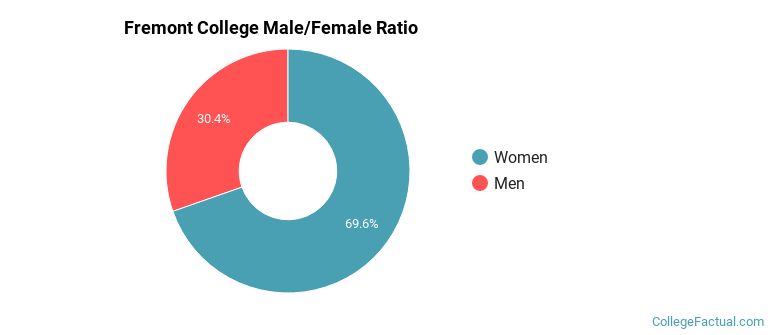
For the gender breakdown for all students, go here.
Fremont College Racial/Ethnic Breakdown of Undergraduates
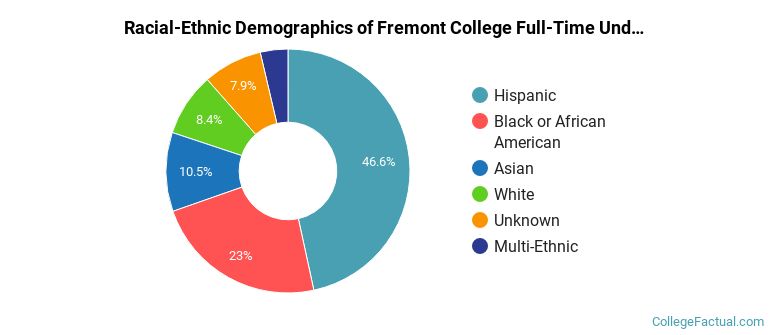
| Race/Ethnicity | Number |
|---|---|
| Hispanic | 78 |
| Black or African American | 30 |
| Unknown | 27 |
| Asian | 17 |
| White | 13 |
| Multi-Ethnic | 6 |
| Native Hawaiian or Pacific Islander | 0 |
| International | 0 |
See racial/ethnic breakdown for all students.
Male/Female Breakdown of Graduate Students
About 56% of full-time grad students are women, and 44% men.

For the gender breakdown for all students, go here.
Fremont College Racial-Ethnic Breakdown of Graduate Students

| Race/Ethnicity | Number |
|---|---|
| Hispanic | 3 |
| Black or African American | 2 |
| Unknown | 2 |
| White | 1 |
| Multi-Ethnic | 1 |
| Asian | 0 |
| Native Hawaiian or Pacific Islander | 0 |
| International | 0 |
See racial/ethnic breakdown for all students.
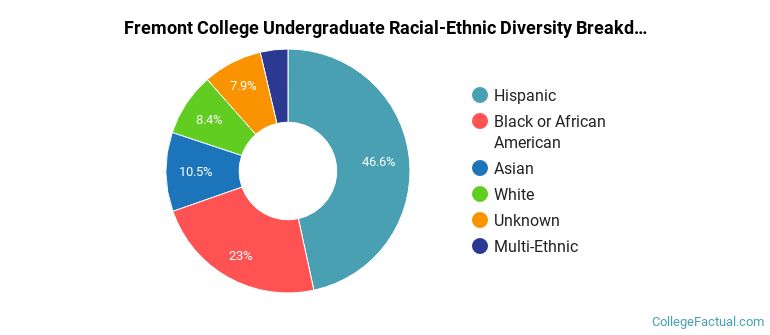
| Race/Ethnicity | Number |
|---|---|
| Hispanic | 81 |
| Black or African American | 32 |
| Unknown | 29 |
| Asian | 17 |
| White | 14 |
| Multi-Ethnic | 7 |
| Native Hawaiian or Pacific Islander | 0 |
| International | 0 |
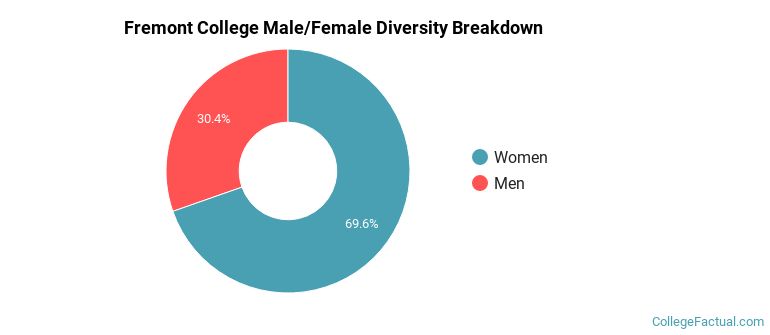
There are approximately 126 female students and 54 male students at Fremont College.
Fremont College ranks 2,067 out of 2,183 when it comes to geographic diversity.
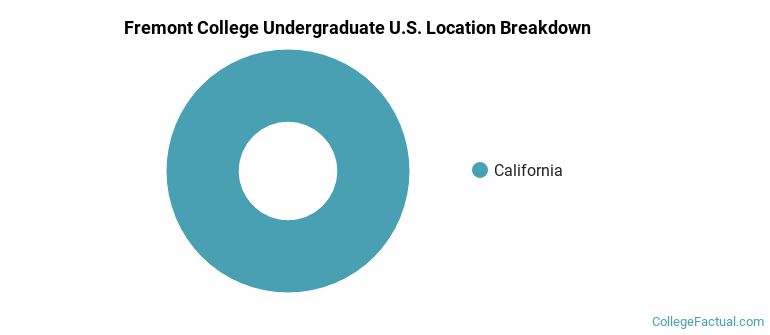
The undergraduate student body is split among 1 states (may include Washington D.C.). Click on the map for more detail.
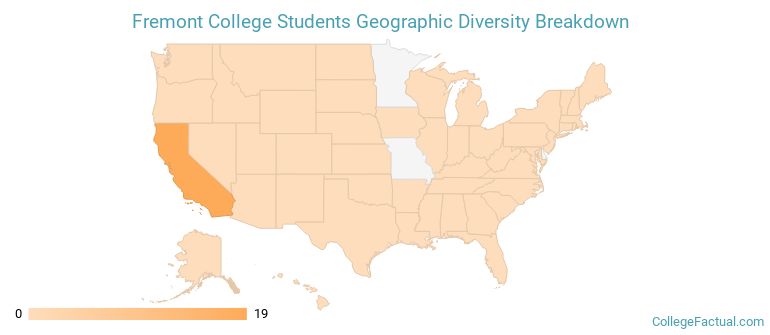
| State | Amount |
|---|---|
| California | 19 |
| Alaska | 0 |
| Alabama | 0 |
| Arkansas | 0 |
| Arizona | 0 |
A traditional college student is defined as being between the ages of 18-21. At Fremont College, 9.89% of students fall into that category, compared to the national average of 60%.
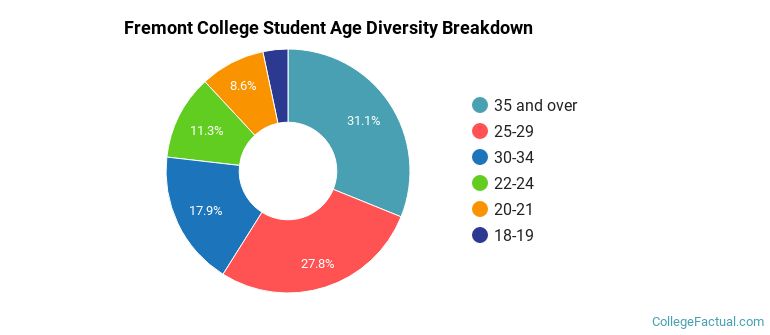
| Student Age Group | Amount |
|---|---|
| 35 and over | 47 |
| 25-29 | 42 |
| 30-34 | 27 |
| 22-24 | 17 |
| 20-21 | 13 |
| 18-19 | 5 |
| Under 18 | 0 |
Footnotes
*The racial-ethnic minorities count is calculated by taking the total number of students and subtracting white students, international students, and students whose race/ethnicity was unknown. This number is then divided by the total number of students at the school to obtain the racial-ethnic minorities percentage.
References
Department of Homeland Security Citizenship and Immigration Services
Read College Factual's Diversity Ranking Methodology.